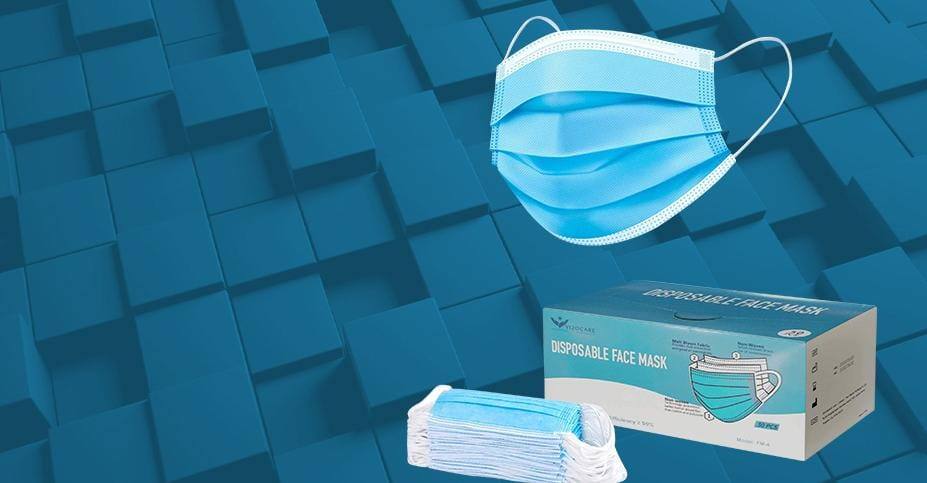
Why We Should Wear Face Masks to Fight Covid-19?

Face masks have become the symbol of the COVID era – a ubiquitous reminder of the virus that is invisible and hiding in plain sight. A few years ago, the sight of people wearing masks in public would have seemed strange, and aside from some countries in Asia, most people were generally unused to wearing masks. Today, masks are prevalent and serve as a solemn reminder of the time that we live in.
Despite the scientific consensus that wearing masks decreases the risk of contracting COVID, there is still a debate about whether the public should be encouraged to wear face masks. And especially in the US, there are vocal refusals from a number of individuals over wearing face masks in public. Multiple polls suggest that around a third of Americans go out in public without wearing a mask. Meanwhile, polls conducted in Spain, Italy, and China had results where over 80% of people asked say they wear face coverings when going outside. However, face masks remain an intensely political issue in the US.
Do face masks really make a difference against Covid-19?
A very important point is that the countries that flattened the pandemic curve used face masks in public. Multiple studies have examined whether face masks have played a role in limiting the spread of COVID, and the answer was a resounding yes, especially in Asian countries. For some reason, until very recently, most countries in the west were unable to learn from or implement what worked in Asia.
To understand why face masks work, it is important to understand how the COVID virus spreads. The Sars-CoV-2 virus responsible for the disease hijacks a person’s cells to replicate itself. As the virus multiplies, the new virus particles burst out of the cells and are suspended in the bodily fluids in the lungs, mouth, and nose. When an infected person breathes out, sneezes or coughs, they spew out showers of tiny droplets or aerosols filled with the virus into the surrounding air. A single cough can produce up to 3,000 droplets. The virus can also be spread simply through the simple act of speaking.
Once out of the nose or mouth, many of the larger droplets will settle onto nearby surfaces, while smaller droplets remain suspended in the air for hours, where other people in the area can breathe them in as they pass by. The Sars-CoV-2 virus has been found to survive in these aerosol droplets for at least three hours, and the COVID virus is remarkably resilient in aerosol form compared to other similar corona viruses. The virus is most commonly transmitted in indoor environments, such as inside homes, on public transport, in restaurants, cinemas, and shops.
Face masks help to reduce transmission particularly if used in public transport and crowded areas. A standard surgical face mask is enough to considerably reduce the amount of virus escaping the breaths and coughs of infected people. One of the reasons why widespread face mask wearing is so important with COVID is due to the prevalence of asymptomatic people who can still spread the virus to others. It is estimated that about 6% to 18% of the infected can carry the virus without any symptoms. Add to this an incubation period of around five to 14 days before symptoms develop, and many people who don’t show any signs of being infected can spread the virus to a lot of people before they start to develop symptoms themselves. This makes it particularly difficult to suppress the transmission of the virus. However, if everybody is wearing a face mask, including the infected and asymptomatic people, this will result in the reduction of the amount of virus which gets into the environment and would minimize new infections.
N95 and KN95 Masks


In the medical field, the N95 respirator mask is regarded as the gold standard of face protection. The borders of these face coverings are meant to fit securely on your face, unlike surgical face masks. N95 respirators are defined by the US Food and Drug Administration (FDA) as a protective device designed to create a very tight face fit and extremely effective airborne particle filtering. Despite the fact that KN95s and N95s are quite similar, only the N95 face mask is allowed to be used in medical settings in the US. The reason is simple: N95s are the American standard for these tight-fitting filtration devices, whereas KN95s are the Chinese standard. Both are capable of filtering out 95% of every minute particle.
Surgical Masks

Surgical face masks, unlike N95 and KN95 respirators, are designed to fit loosely. This allows some of the air to go around the mask to the breathing zone rather than through the mask material. However, the addition of nylons on the outside of the mask helped to reduce this, and today’s surgical masks have nylons on the edges of the mask to stop air from entering from the sides. Studies found that surgical masks – the kind worn by surgeons in operating theatres – could keep out almost 75% of particles down to a size of 0.02 microns. While less effective than an N95 respirator, a surgical mask can still help to reduce the number of particles breathed in.
Cloth Masks

With demand for respirators and surgical masks high, many people are forced to make their own alternatives such as cloth face masks. Research has found that while pulling a shirt up over your nose and mouth will block less than half of the aerosols coming towards it, doubling and even tripling the layers of a cotton shirt fabric can dramatically improve things in an emergency. Other fabrics such as silk and polyester were also found to be surprisingly effective. Cotton flannel, felted wool and quilting cotton have been found to be particularly good at blocking ultrafine particles, and also serve as a good emergency mask substitute.

Leave a comment